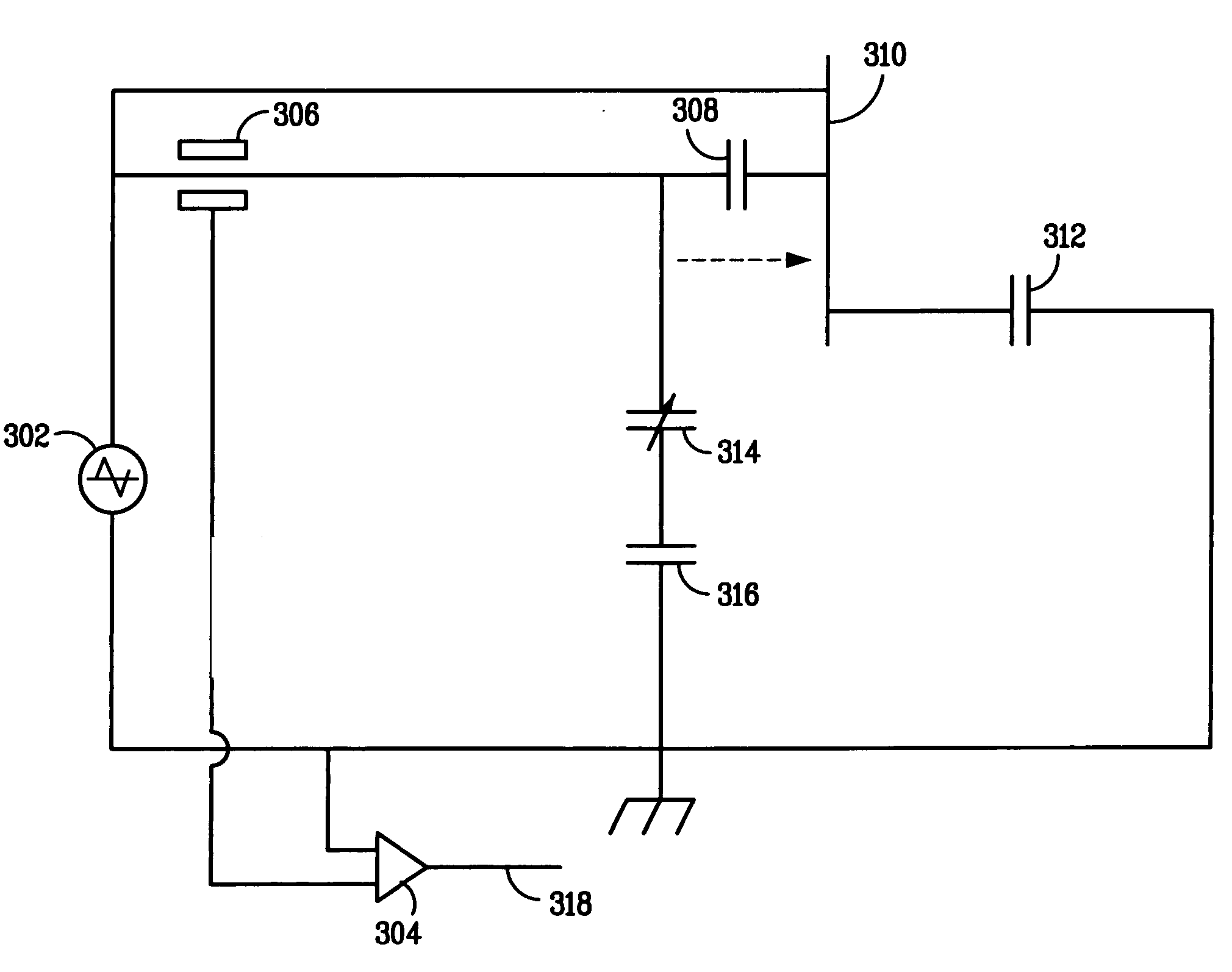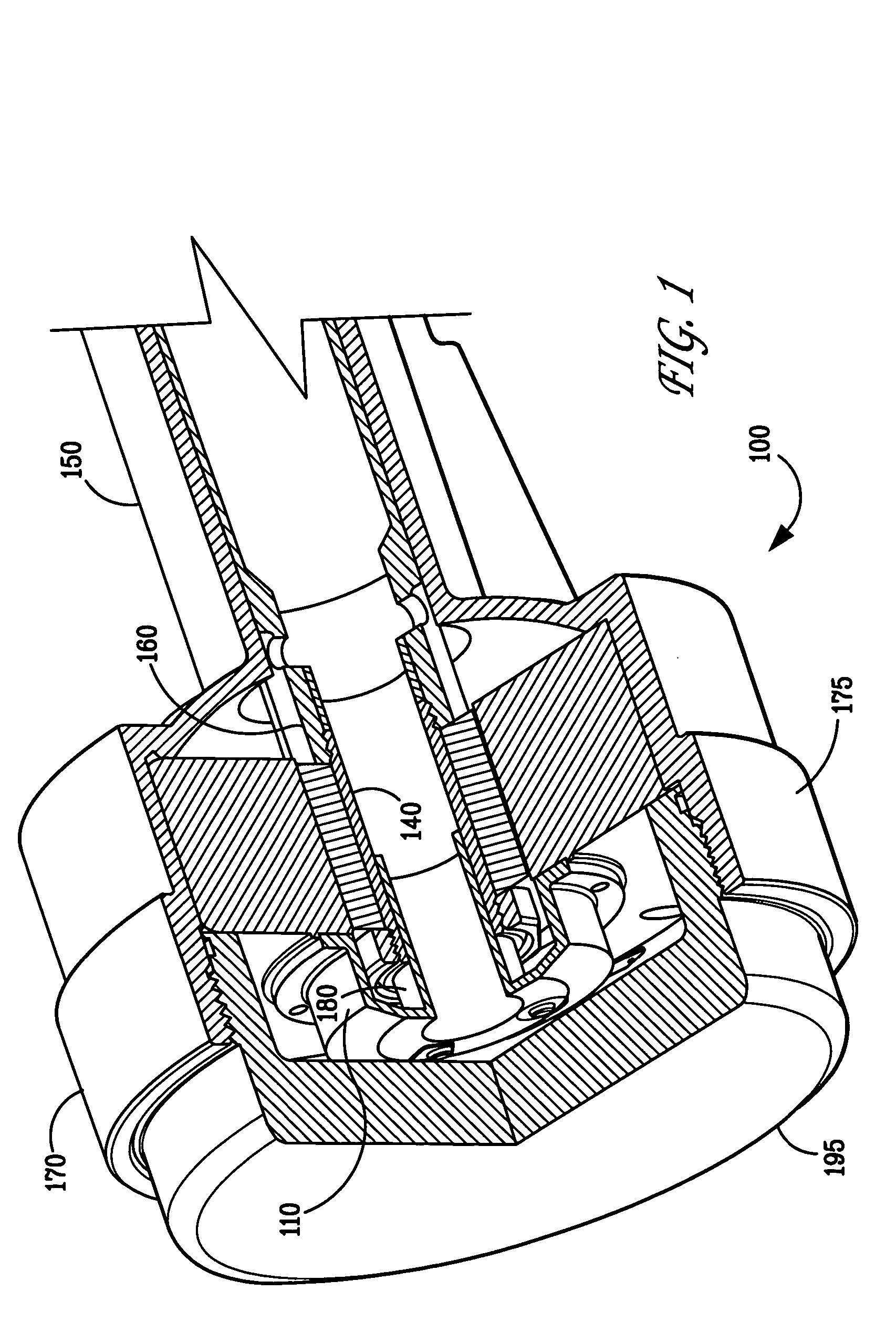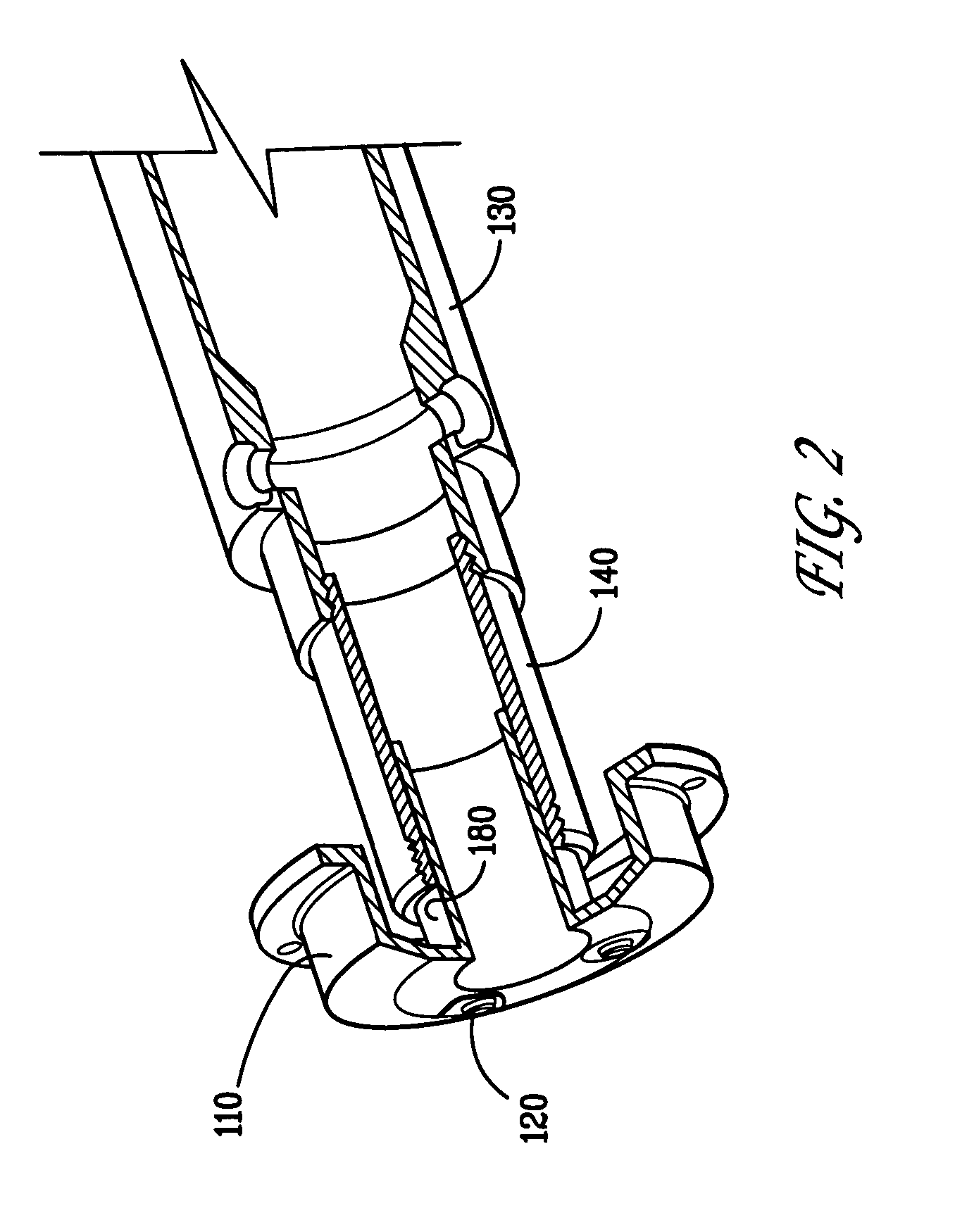Capacitive position sensor and sensing methodology
a capacitive position sensor and sensing technology, applied in the field of reciprocating members, can solve the problems of small and not so small changes in power demand, over-noise of engines, and often exceeding acceptable levels of exhaust emissions of these engines, and achieve accurate and efficient measurement and determination, high-line transfer function
- Summary
- Abstract
- Description
- Claims
- Application Information
AI Technical Summary
Benefits of technology
Problems solved by technology
Method used
Image
Examples
first embodiment
the signal conditioning methodologies of the present invention uses variable current detection in order to generate a signal which may be used for control purposes in connection with, for example, piston and / or displacer movement within a Stirling engine. This embodiment is described in connection with FIG. 4. It is assumed for the purposes of the following discussion that the output signal generated may be a continuous analog voltage proportional to capacitance and hence piston position which is made available to a processor such as an analog to digital converter (ADC) input of a mixed signal digital signal processor (DSP) such as a Texas Instruments TMS320LF2407A or Analog Devices ADMC401 for control and other purposes as is known in the art. The DSP can also be used to generate the sensor excitation carrier wave as is described below or the signal may be sourced from another device.
Referring now specifically to FIG. 4 one particular circuit for signal conditioning using variable...
PUM
 Login to View More
Login to View More Abstract
Description
Claims
Application Information
 Login to View More
Login to View More - R&D
- Intellectual Property
- Life Sciences
- Materials
- Tech Scout
- Unparalleled Data Quality
- Higher Quality Content
- 60% Fewer Hallucinations
Browse by: Latest US Patents, China's latest patents, Technical Efficacy Thesaurus, Application Domain, Technology Topic, Popular Technical Reports.
© 2025 PatSnap. All rights reserved.Legal|Privacy policy|Modern Slavery Act Transparency Statement|Sitemap|About US| Contact US: help@patsnap.com



